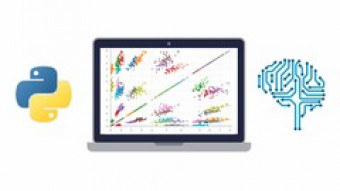Cortex M
Tags: Embedded Systems
A 14 day proven course to a higher paying career in embedded systems, with deep understanding of ARM Cortex and STM32
Last updated 2022-01-10 | 4
- In-depth understanding of the ARM Cortex fundamentals- Set up a free and open source toolchain on your computer to program
- flash and debug ARM based microcontrollers
- Core register functionality like stack pointers
- link registers
- program counters
- control registers
- vector tables
What you'll learn
In-depth understanding of the ARM Cortex fundamentals
Set up a free and open source toolchain on your computer to program
flash and debug ARM based microcontrollers
Core register functionality like stack pointers
link registers
program counters
control registers
vector tables
Understand different types of exceptions on the ARM Cortex-M processor and what each of them mean
Understand different peripherals and how to program them
Hardware Abstraction Layer (HAL) Libraries and how to use them
Feel confident and comfortable programming applications on the Cortex-M platform
What is a programmers model and how it works for an ARM Cortex-M
Unprivileged and privileged software execution levels
Vector Table Offset Register (VTOR) and its uses
Big Endian Format vs Little Endian Format
OpenOCD (Open source debugger)
STCubeMX Application and how to generate HAL drivers
* Requirements
* Basic knowledge of embedded systems* STM32 Nucleo development board is recommended
* but not mandatory
* Eager to learn about ARM Cortex-M fundamentals
Description
- In-depth understanding of the ARM Cortex fundamentals
- Set up a free and open source toolchain on your computer to program, flash and debug ARM based microcontrollers
- Core register functionality like stack pointers, link registers, program counters, control registers, vector tables
- Understand different types of exceptions on the ARM Cortex-M processor and what each of them mean
- Understand different peripherals and how to program them
- Hardware Abstraction Layer (HAL) Libraries and how to use them
- Feel confident and comfortable programming applications on the Cortex-M platform
- What is a programmers model and how it works for an ARM Cortex-M
- Unprivileged and privileged software execution levels
- Vector Table Offset Register (VTOR) and its uses
- Big Endian Format vs Little Endian Format
- OpenOCD (Open source debugger)
- STCubeMX Application and how to generate HAL drivers
Course content
15 sections • 56 lectures
Important points before you get started Preview 00:44
ARM Cortex Family Preview 03:35
Cortex-M Family Preview 04:47
Acronym ISA (0:28) stands for Instruction Set Architecture.
Cortex-M4 Instruction Set Preview 03:05
ARM vs Thumb instructions quiz
Guidelines Preview 00:23
Overview of the Nucleo F303RE board Preview 04:00
Reference Documents Preview 01:13
All the reference documents that you will need in this course, with descriptions for each of them.
Programmer's Model Preview 06:10
General Registers and Process Specific Registers Preview 04:35
Special Registers Preview 05:36
Lab Session #1 - Programmers Model - General and Special Registers Preview 22:17
Programmers Model Quiz
Lab Session #2 - Programmers Model - xPSR and Control Register Preview 17:56
Attached is the document I use in this lecture to show the definitions of special registers.








 This course includes:
This course includes:
![Flutter & Dart - The Complete Guide [2022 Edition]](https://img-c.udemycdn.com/course/100x100/1708340_7108_5.jpg)















